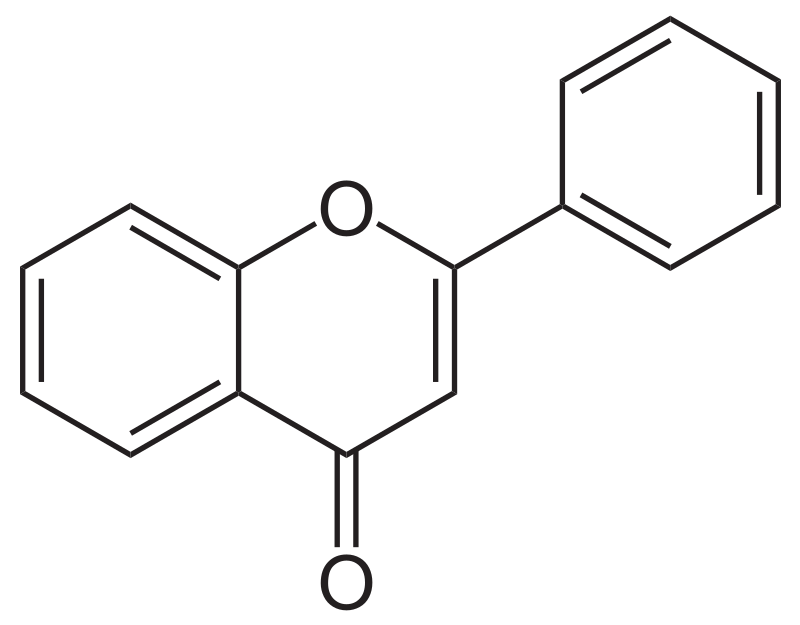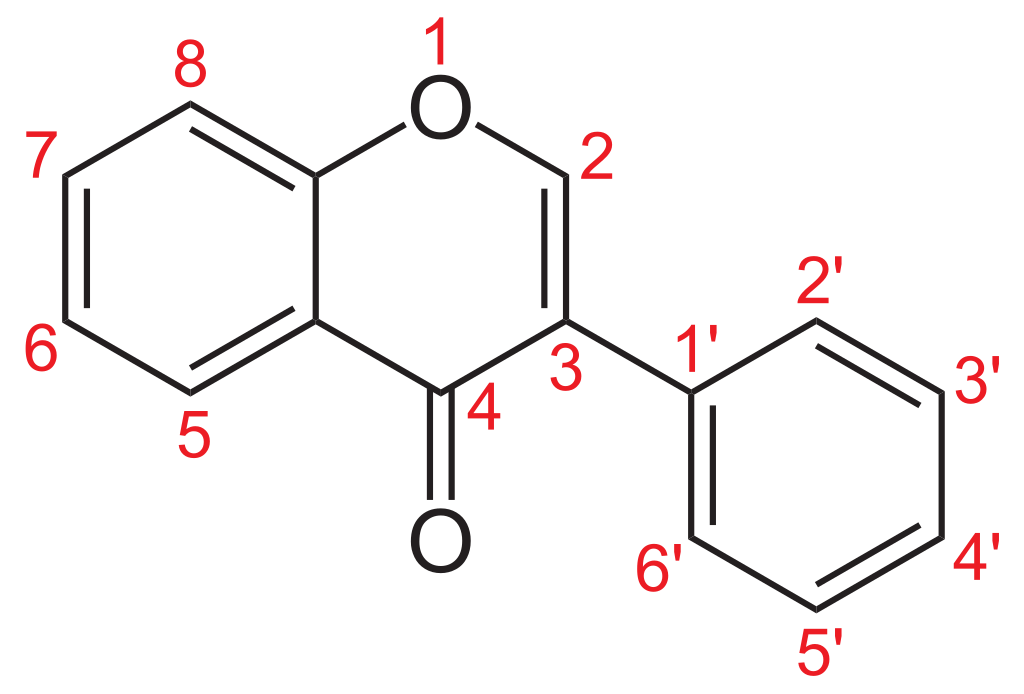Search Dictionary
Version history
- Current: Jun 16, 2024
Flavonoid
A flavonoid, in broad terms, is a group of natural compounds consisting of bioflavonoids, isoflavonoids, and neoflavonoids, which are derived from flavone (2-phenylchromen-4-one, Fig. 1), 3-phenylchromen-4-one (Fig. 2), and 4-phenylcoumarin (Fig. 3), respectively.
Bioflavonoids are often referred to as flavonoids. Flavonoids are typical plant pigments, and over 5,000 naturally occurring flavonoids have been characterized.

Fig. 1. Structure of flavone (2-phenylchromen-4-one).

Fig. 2. Structure of 3-phenylchromen-4-one with carbon numbers.
Fig. 3. Structure of 4-phenylcoumarin.
Definitions in the literature
Descriptions licensed under Creative Commons are shown in black.
- One of a group of naturally occuring phenolic compounds many of which are plant pigments [1].
- Flavonoids, isoflavonoids and neoflavonoids are natural products derived from 2-phenylchromen-4- one (flavone), 3-phenylchromen-4-one and 4-phenylcoumarin, respectively [2].
- Flavonoids (or bioflavonoids) are a class of plant and fungus secondary metabolites. Chemically, they have the general structure of a 15-carbon skeleton, which consists of two phenyl rings (A and B) and heterocyclic ring (C) [3].
- Flavonoids are a class of plant specialized metabolites with a basic C6-C3-C6 skeleton, for which 10 major classes (i.e., chalcones, aurones, flavanones, flavones, isoflavones, dihydroflavonols, flavonols, leucoanthocyanidins, anthocyanidins, and flavan-3-ols) have been described [4].

